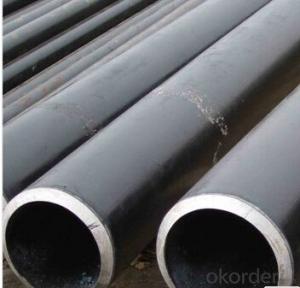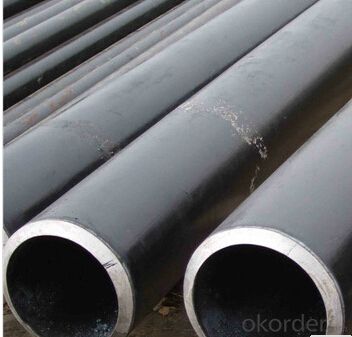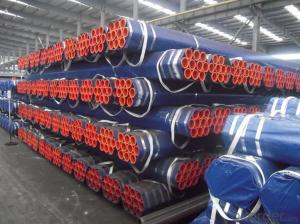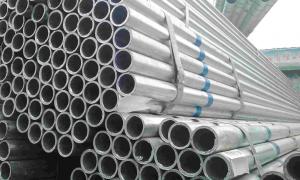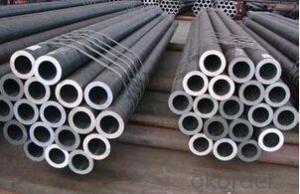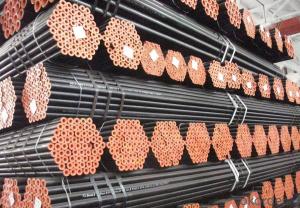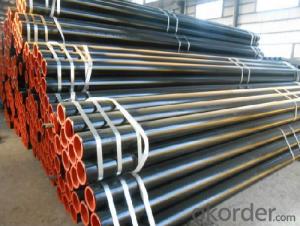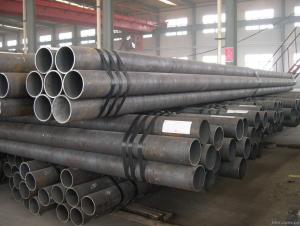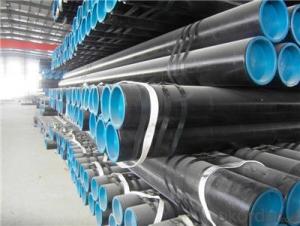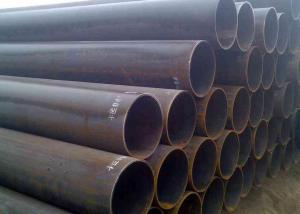low and medium pressure boiler seamless steel tubes
- Loading Port:
- Shanghai
- Payment Terms:
- TT OR LC
- Min Order Qty:
- 25 m.t.
- Supply Capability:
- 5000 m.t./month
OKorder Service Pledge
OKorder Financial Service
You Might Also Like
Packaging & Delivery
| Packaging Detail: | in bundle |
| Delivery Detail: | 7 days afer order is confirmed |
Specifications
boiler seamless steel tubes
1. fast delivery
2. rich material inventory
3. competitive price
low and medium pressure boiler seamless steel tubes
Pipe Size | 1/2"—48" (DN15-1200) |
Wall Thickness | SCH10,SCH20,SCH30,STD,SCH40,SCH60,XS,SCH80,SCH100,SCH120, SCH140,SCH160,XXS,DIN, JIS standard thickness |
Length | Fixed: 3.0 , 5.8 , 5.85 , 5.9 , 6.0 ,11.8 , 12.0m. Random length: 5-12m |
Standard | ASTM A53, A106, API 5L, ASME B36.10M-1996 DIN1626, DIN1629, DIN17175, DIN 2448 JIS G3452,JIS G3454,JIS G3455,JIS G3456,JIS G3457,JIS G3461 |
Material | Q235, 20#, Q345 A53B, A106B, API 5L B,X42,X46,X52,X60, X65 ST37.0,ST35.8,St37.2,St35.4/8,St42,St45,St52,St52.4 STP G38,STP G42,STPT42,STB42,STS42,STPT49,STS49 |
Application | Low and middle pressure fluid pipeline, boiler, petroleum and natural gas industry, drilling, chemical industry, electric industry, shipbuilding, fertilizer equipment and pipeline, structure, petrochemical, pharmaceutical industry |
Surface | Black painting, varnish paint, anti rust oil, hot galvanized, cold galvanized, 3PE,etc. |
Package | Plastic caps on both ends, Steel bundle, Woven bag or acc. to customers' request |
Certificate | ISO9001, SGS,BV, etc |
Capacity | 80000tons/year |
Advantages | 1.Reasonable price with excellent quality 2.Abundant stock and prompt delivery 3.Rich supply and export experience, sincere service 4.Reliable forwarder, 2-hour away from port. |
Applications:
It mainly used for fluid transportation piping, for example oil, natural gas, water, coal gas and steam transporting. Because of the light weight, it also can be widely used in mechanical spare parts and structural parts.
1. Our pipe size
OD: 1/8'' to 48'', nomical thickness :Sch5s to XXS
2.Our pipe including:
ASTM A106 seamless carbon steel pipe
Structure steel pipe
ASTM A179 cold drawn low carbon steel pipe
ASTM A192 steel boiler tubes
ASTM SA213/A519 alloy steel pipe
DIN1629/EN10216-1 Pipe line
DIN17175/EN10216-2 Heat Resisting seamless steel pipe lines
DIN 2391-1 cold drawn or cold rolled steel tube
API SPEC 5CT Tubing and Casing
- Q: Can steel pipes be used for underground sewer systems?
- Yes, steel pipes can be used for underground sewer systems. They are commonly used due to their strength, durability, and resistance to corrosion, making them suitable for handling wastewater and underground installation.
- Q: How are steel pipes measured and labeled?
- Steel pipes are typically measured and labeled based on their diameter, wall thickness, and length. The diameter is measured in inches or millimeters, while the wall thickness is often expressed in inches or schedule numbers. The length is usually specified in feet or meters. Additionally, steel pipes may also bear labels indicating the type of steel used, industry standards compliance, and any specific certifications or markings required.
- Q: How are steel pipes used in the agriculture sector?
- Steel pipes are commonly used in the agriculture sector for various purposes such as irrigation systems, water transportation, and structural support for greenhouse structures. They are also used for the construction of livestock enclosures and handling equipment. Overall, steel pipes play a crucial role in ensuring efficient and reliable operations in the agriculture industry.
- Q: What is the weight of a steel pipe?
- The weight of a steel pipe can vary depending on its size, length, and thickness. To determine the weight, you would need specific measurements of the pipe.
- Q: The difference between carbon and welded steel tubes
- Seamless steel pipe because there is no weld, so can withstand greater pressure, boiler tubes are generally used seamless steel pipe
- Q: How are steel pipes insulated for thermal efficiency?
- Steel pipes are insulated for thermal efficiency by adding a layer of insulation material around them. This insulation helps to reduce heat transfer through the pipes, preventing energy loss and maintaining the desired temperature.
- Q: What are the different methods of welding steel pipes?
- There are several methods of welding steel pipes, including arc welding, TIG (tungsten inert gas) welding, MIG (metal inert gas) welding, and oxy-fuel welding. Each method has its own advantages and applications, depending on factors such as the thickness of the steel, the desired strength of the weld, and the available equipment.
- Q: How do you join steel pipes together?
- Steel pipes can be joined together using various methods, including welding, threading, and using mechanical couplings.
- Q: How are steel pipes used in the manufacturing of shipbuilding?
- Steel pipes are used in shipbuilding for various purposes such as constructing the ship's hull, piping systems for fuel and water transport, ventilation systems, and structural support. They provide strength, durability, and corrosion resistance, making them essential components in the construction and operation of ships.
- Q: How are steel pipes used in bridge construction?
- Steel pipes are commonly used in bridge construction as piling or foundation elements. They are driven into the ground to provide support and stability to the bridge structure. Additionally, steel pipes can be used as structural members in the bridge's superstructure, such as for the construction of bridge piers or trusses, due to their high strength and durability.
Send your message to us
low and medium pressure boiler seamless steel tubes
- Loading Port:
- Shanghai
- Payment Terms:
- TT OR LC
- Min Order Qty:
- 25 m.t.
- Supply Capability:
- 5000 m.t./month
OKorder Service Pledge
OKorder Financial Service
Similar products
Hot products
Hot Searches
Related keywords
